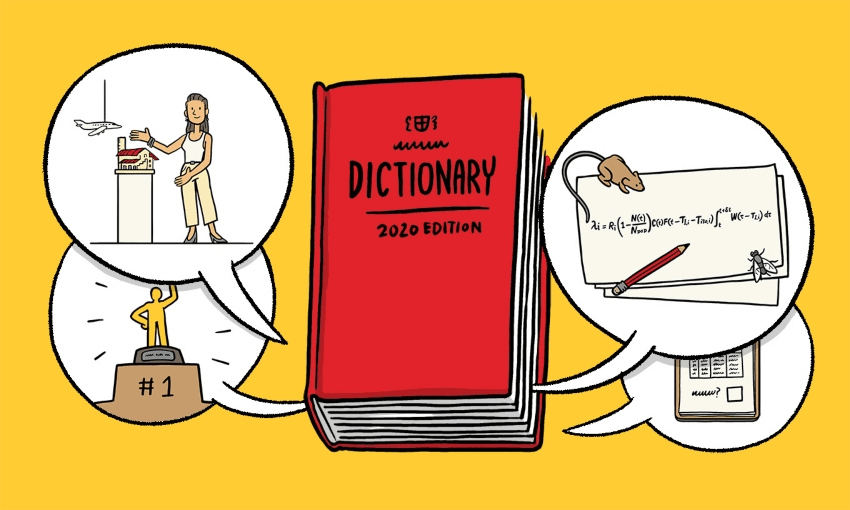New Zealand is pursuing an ‘elimination’ strategy to counter the coronavirus pandemic. But that word, as with many terms in science, is not necessarily the same as its common usage.
Here in Aotearoa New Zealand, our plan is to eliminate Covid-19. We have long since abandoned the “flatten the curve” strategy, which aims to slow the spread of the disease to the extent that it doesn’t overwhelm our health service, for something more ambitious. We want to eliminate it. But what do we mean by “eliminate”, exactly? Sometimes words we know well mean something else to other people. And that can lead to all sorts of confusion and misunderstandings. Eliminate is one of those words.
When epidemiologists use the word eliminate in the context of Covid-19, they mean to bring the disease under control and reduce cases to zero in a particular geographical location. Of course, when anyone who isn’t an epidemiologist hears the word eliminate, they understand it to mean to completely remove or get rid of something. The word epidemiologists have for that is eradication. If we were aiming to eradicate Covid-19 that would require a global effort to see the virus responsible gone everywhere.
Given we are one of the few countries in the world aiming for elimination, it’s clear that eradication of Covid-19 is not going to happen anytime soon. The only disease that the world has managed to completely scrub out of existence on the planet, according to that the World Health Organisation, is smallpox.
The best way for New Zealand to ensure we get to zero cases would be to keep the country in lockdown until several weeks have gone by with no new reported cases. By that time, we would expect anyone who had been infectious to no longer be infectious. But lockdown is obviously very hard. So an alternative strategy is to use lockdown as we have – to get cases to a very small number so that we can then start easing back down the alert system, using testing, contact tracing, and isolation to break any existing chains of transmission and physical distancing to prevent further cases.
Throughout this crisis, we’ve been looking wherever possible to overseas – assessing what worked and what didn’t. That teaches us that that if countries move too fast to get back to “normal”, can rise rapidly: too rapidly for testing, contact tracing, and isolation to keep them under control. And then it’s back to exponential spread and the need for lockdown. That is why it is so important that we all do our best to follow the rules for each alert level. They’re there for a reason, and the evidence suggests that New Zealanders understand that.
Elimination isn’t the only word that you might read differently depending on the setting. During this pandemic there are probably lots of other words you’ve heard people use that have more than one meaning. So Spinoff cartoonist Toby Morris and I have created a guide to the different meanings of a bunch of words you’ll have heard mathematicians, statisticians, microbiologists, epidemiologists and other ists and ians and ologists use when talking about Covid-19.
Read Toby Morris’s Side Eye comic, created with Siouxsie Wiles, here. And more of Siouxsie’s writing here.


